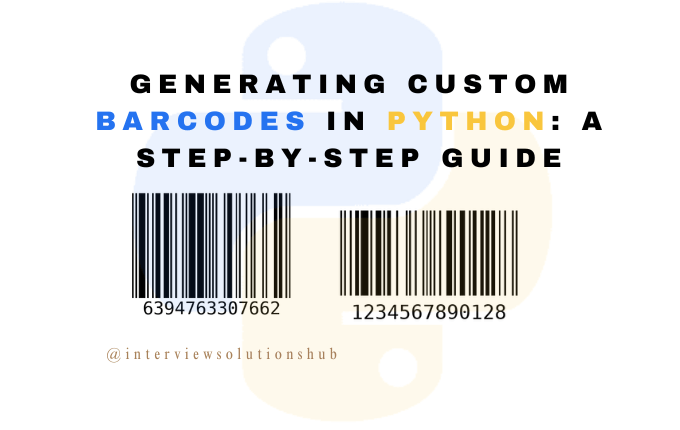React.js vs React Native – What's the Difference?
Read More


Barcodes are essential for inventory management, retail, and product tracking. In this blog post, we'll explore how to generate custom EAN-13 barcodes in Python using the barcode library.
Python provides simple yet powerful libraries to generate barcodes programmatically. This is useful for:
First, install the python-barcode and pillow (for image handling) libraries:
pip install python-barcode pillow
EAN-13 barcodes require a 12-digit number (the 13th digit is a checksum). We can generate a random unique code:
import random
def generate_unique_code():
return ''.join([str(random.randint(0, 9)) for _ in range(12)])
Store product names and their corresponding barcode numbers in a dictionary:
products = {
"Product 1": generate_unique_code(),
"Product 2": generate_unique_code()
}Customize barcode appearance for better readability:
writer_options = {
"module_width": 0.4, # Thicker bars
"module_height": 25.0, # Taller bars
"font_size": 12, # Larger text
"text_distance": 5.0, # Space between barcode and text
"quiet_zone": 10.0, # Margin around the barcode
"write_text": True # Display the number below
}Use the EAN13 format to generate and save barcodes as PNG files:
EAN13 = barcode.get_barcode_class('ean13')
for product_name, code in products.items():
filename = product_name.lower().replace(" ", "_")
barcode_obj = EAN13(code, writer=ImageWriter())
output_path = barcode_obj.save(filename, options=writer_options)
print(f"✅ Barcode for {product_name} saved as {output_path}.png")Running the script will generate PNG files for each product:
✅ Barcode for Product 1 saved as product_1.png
✅ Barcode for Product 2 saved as product_2.png With just a few lines of Python, you can generate professional-looking barcodes for your products. This method is scalable, allowing batch generation for large inventories.
Try modifying the writer_options to adjust barcode size, text, and margins to fit your needs!
Happy coding! 🚀
Recent posts form our Blog
.png)


.png)


0 Comments
Like 0